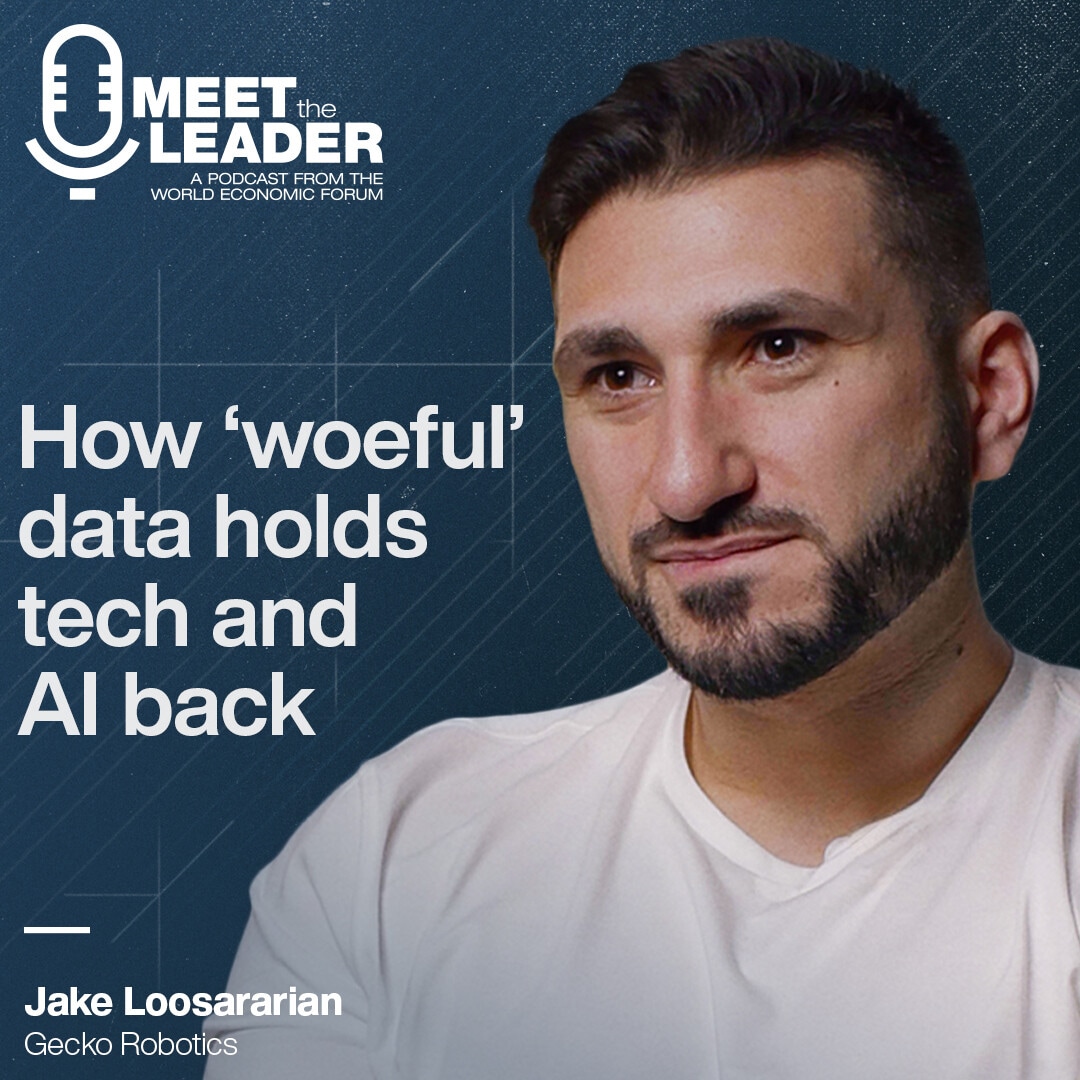Life after the hype: How AI is transforming industries and economies

Generative AI is already being used innovatively in a range of industries.
Image: Getty Images/iStockphoto
Jules White
Senior Advisor to the Chancellor for Generative AI in Education and Enterprise Solutions, Vanderbilt UniversityStay up to date:
Tech and Innovation
- It’s time to take stock of how generative AI has been applied in a range of industries and what it could mean for economies going forward.
- It is by now evident that generative AI is a tool we can use to perform tasks with such efficiency that we never thought possible.
- A key variable influencing the macro impact of generative AI is the degree of public-private cooperation and overall regulatory approach.
A year after the release of the first version of ChatGPT, media and investor attention on generative artificial intelligence (AI) has moderated. Headlines are fewer, and the market capitalization of the largest US companies considered to be direct beneficiaries of AI has stabilized after soaring initially.
It seems an appropriate time to take stock of how ChatGPT and similar tools have been applied in a range of industries over the past year, and what they could mean for economies going forward.
Redefining the work experience
The transformational impact of generative AI should not be underestimated. When the primatologist Jane Goodall first witnessed Gombe chimpanzees fishing for termites by manipulating blades of grass in 1960, the line between humans and other animals suddenly blurred. The intelligent use of tools was no longer known to be a uniquely human trait, leading her mentor, the paleoanthropologist Louis Leakey, to famously say, “Now we must redefine tool, redefine man, or accept chimpanzees as human.”
It is by now evident that generative AI is a tool we can use to perform tasks with such efficiency that we never thought possible, and this is redefining the work experience. Imagine you are tasked with digging a hole and there is a rock blocking the spot. Generative AI is the equivalent of being handed a shovel that transforms into a pickaxe to break down that rock, then goes back to being a shovel to finish the job.
More concretely, generative AI is already being used innovatively in a range of industries. Below is a small sampling of its less-publicized use cases that nonetheless hold the potential for transformational applications:
1. Healthcare: Doctors are using generative AI to help capture summaries of large amounts of medical literature or brainstorm potential causes of hard-to-diagnose conditions. Hospitals are using personas to better empathize with individual patients to anticipate their needs or communicate with them in a more understandable way.
2. Law: Legal firms are using AI to stress-test the strength of arguments and explore ways to negotiate middle grounds. The technology is also being used to support humans performing contract review by looking for specific terms (such as “indemnification”) and identifying sections for further human review.
3. Agriculture: AI is helping farmers with irrigation optimization by collecting and analyzing hectare-by-hectare data on temperature, humidity, and wind speed and direction, among others. Farmers can use generative AI to find possible causes of and remedies for low crop yield or identify pests and diseases.
4. Manufacturing: Car companies are using AI to analyze focus group feedback by automatically turning recorded discussions into structured data and summarizing group sentiment regarding different vehicle features. Manufacturers are using unstructured data in surveys, dealer warranty reports, and other language from vehicle owners to identify problems faster, determine consumer needs, and plan marketing campaigns.
One other way the technology is impacting productivity is by empowering employees with little to no programming background to write programs that suit their employers’ needs. For example, companies in highly regulated industries, worried about putting data into ChatGPT, have started using the technology to produce custom tools in Python and VBA that they can then apply to their internal data for processing and analysis. By contrast, many software companies have been reluctant to put their code into ChatGPT for fear of compromising their intellectual property.
At an individual level, innovative workers are enhancing productivity by using generative AI to draft plans, agendas and emails; aid in brainstorming; analyze an issue from multiple angles; write personalized software tools; or summarize large sets of information needed to perform specific tasks. As the technology is integrated into workplace platforms that emphasize collaboration, tools such as OpenAI’s ChatGPT, Microsoft’s Copilot, and Google’s GSuite can broaden the scope of the productivity benefits.

Macroeconomic impact of generative AI
Yet the macroeconomic impact of generative AI will not be immediately measurable through common indicators such as GDP growth, inflation and factor productivity. History suggests that the impact of past technological breakthroughs on macroeconomic variables takes years to be felt, not quarters. Nevertheless, the timelines for measuring the impact of generative AI may be accelerated by the fact that the technology can be rolled out quickly via software, and by their relative ease of use with less demanding learning and training requirements.
In our view, a key variable that will influence the macroeconomic impact of generative AI is the degree of public-private cooperation and overall regulatory approach toward the technology. Without proactive public sector involvement and sensible regulation, countries will lack the necessary amount of investment in both human and physical capital to harness the full power of AI.
How is the World Economic Forum creating guardrails for Artificial Intelligence?
An example of a country that is adapting to this new reality is the United Arab Emirates. In a recent visit to the country as part of the World Economic Forum’s Young Leaders Program, we learned that the UAE had created the world’s first Ministry of Artificial Intelligence. UAE authorities are confident other countries will follow suit – similar to what happened over a century ago with the creation of the first-ever energy ministries.
By contrast, countries that don’t promptly recognize the power of generative AI and work on mitigating its risks may not be able to close the gap between innovative micro-level initiatives and macro-level results. The potential is theirs to lose.
Accept our marketing cookies to access this content.
These cookies are currently disabled in your browser.
Don't miss any update on this topic
Create a free account and access your personalized content collection with our latest publications and analyses.
License and Republishing
World Economic Forum articles may be republished in accordance with the Creative Commons Attribution-NonCommercial-NoDerivatives 4.0 International Public License, and in accordance with our Terms of Use.
The views expressed in this article are those of the author alone and not the World Economic Forum.
Related topics:
Forum Stories newsletter
Bringing you weekly curated insights and analysis on the global issues that matter.
More on Emerging TechnologiesSee all
Lim Chow-Kiat
August 21, 2025
Charles Bourgault and Sarah Moin
August 19, 2025
Spencer Feingold
August 18, 2025
Jon Jacobson
August 14, 2025
Ruti Ben-Shlomi
August 11, 2025






